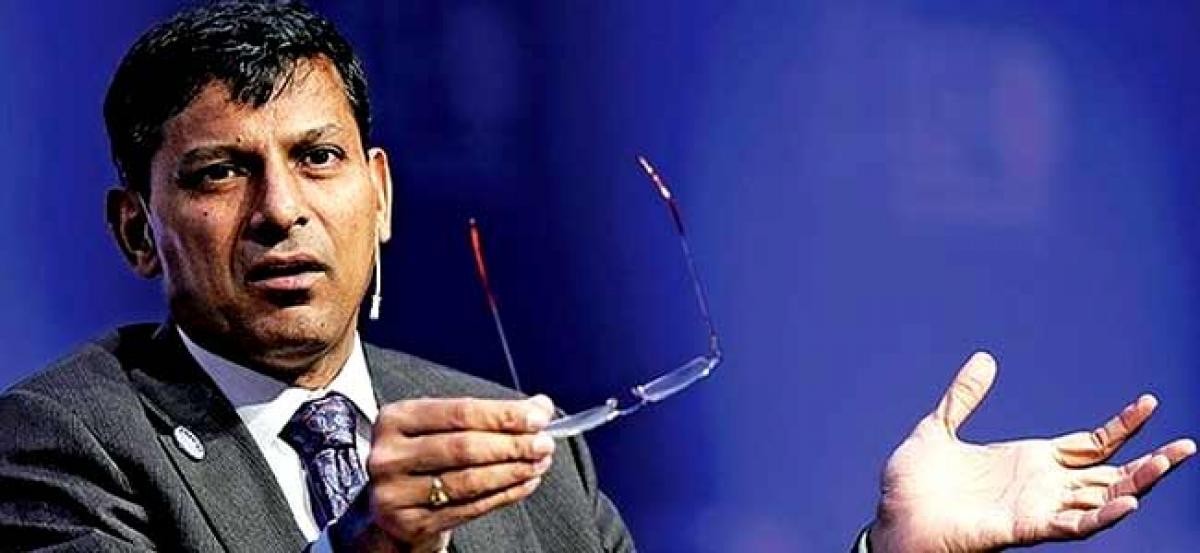Live
- Chirala: Amanchi confident of securing 50% votes
- Kavitha to be in Tihar Jail till May 7
- Elon Musk to Enter the Smart TV Market with the X TV App
- Ongole: Bhashyam school students excel in SSC
- SRMJEEE 2024 Phase I exams conclude
- Rajamahendravaram: Drawing contest held on reading habits
- VIT-AP bags Education Excellence Award
- Chief Secretary reviews arrangements for V-P visit
- KCR all set to roll out poll juggernaut with bus yatra
- Smart vision glasses distributed to visually impaired
Just In

Bad debts in the banking industry are going through the roof these days. The latest count reveals that bad debts in public sector banks soared to a whopping Rs 7.34
Bad debts in the banking industry are going through the roof these days. The latest count reveals that bad debts in public sector banks soared to a whopping Rs 7.34 lakh crore as of September this year. But real count will obviously be much higher if we take all the stressed and vulnerable assets into account. Of course, the story of bad assets doesn't end there either, as bankers are extremely dexterous at concealing some bad debts to sugar-coat their balance sheets. Therefore, the malaise runs much deeper than what we see on the surface. And it needs deeper surgery, for sure.
Raghuram Govind Rajan, noted economist and the 23rd Governor of the Reserve Bank of India till September 2016, saw the danger signs early and, through several steps, forced the banking sector to come clean on the contentious issue of NPAs. But NPAs kept rising since then. This shows that like any other business, doing banking business India is not easy – more so, for the public sector banks given the political pulls, corruption and what not. The global economy crisis of 2008 also took toll on the asset quality. So were also land acquisition and other issues which hit infrastructure projects hard.
With alarm bells getting louder and shriller, RBI has started tightening screws on the weak banks. Beginning with smaller banks, the apex bank has now turned its attention to bigger ones. Recently, it initiated a prompt corrective action (PCA) against Bank of India (BoI) as its gross NPAs soared to 13.22 per cent and RoA (Return on Assets) slipped into red as of March 2017. RBI has indeed done a right thing because BoI is reeling under the third biggest mountain of bad debt at Rs 49,307 crore after SBI (Rs 1.86 lakh crore) and Punjab National Bank (Rs 57,630 crore). The apex bank is likely to go after other big PSBs as well. That bodes well for the economy. Earlier this year, the Centre announced a massive plan of Rs 2.11 lakh crore for the recapitalisation of the banking sector. However, it will not yield positive results unless the weak banks are handled effectively.
Thomas Jefferson, one of the founding fathers of the United States of America and its third President, famously said once: “I sincerely believe that banking establishments are more dangerous than standing armies, and that the principle of spending money to be paid by posterity, under the name of funding, is but swindling futurity on a large-scale.” Isn't this apt for the current state of the ailing Indian public sector banks, now? The country's economy will indeed be in tatters if any of the banks is allowed to fail. It's time the government acted fast and went in for mergers as fast as possible. However, marriages should not be forced; they ought to be cordial and cohesive. Otherwise, good banks will turn bad post-mergers!

© 2024 Hyderabad Media House Limited/The Hans India. All rights reserved. Powered by hocalwire.com







